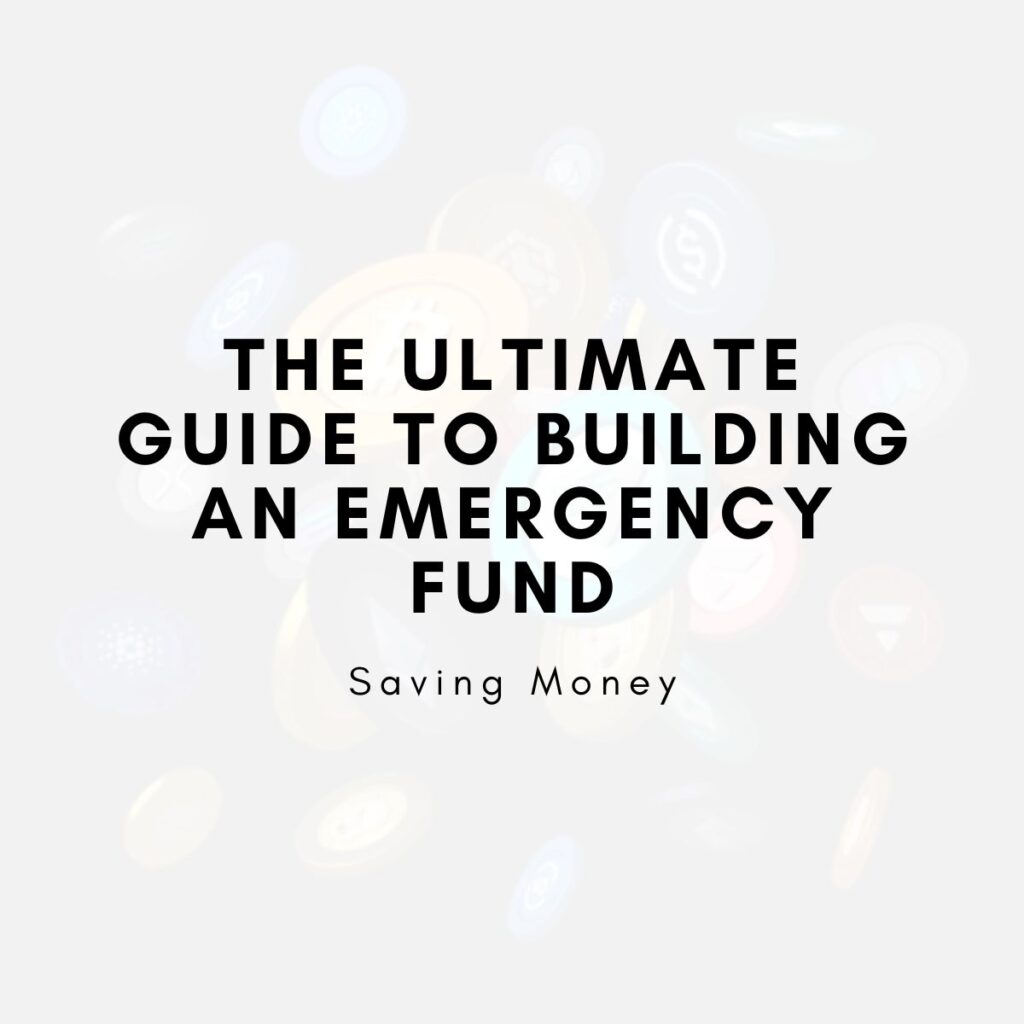
How can you build an emergency fund effectively?
Building an emergency fund requires setting clear savings goals, budgeting effectively, automating your savings, and minimizing unnecessary expenses. By committing to consistent saving habits and leveraging side income, you can create a financial safety net to protect yourself from unexpected expenses.
Introduction
An emergency fund is your financial safety net, offering security and peace of mind when life throws unexpected challenges your way. From sudden medical expenses to car repairs or job loss, having a dedicated savings cushion helps you weather financial storms without resorting to debt.
This guide provides a comprehensive, step-by-step approach to building an emergency fund, including actionable strategies, real-life examples, and tips for maintaining financial stability over the long term.
Summary Table: Steps to Build an Emergency Fund
| Step | Action | Example |
|---|---|---|
| 1. Understand the Importance | Recognize the value of an emergency fund in preventing debt and providing financial security. | Avoid using high-interest credit cards for a $1,500 car repair by having savings ready. |
| 2. Set a Savings Goal | Start with $1,000, then aim for 3-6 months’ living expenses. | Save $7,500-$15,000 if monthly expenses are $2,500. |
| 3. Budget Effectively | Track income/expenses, reduce non-essentials, and prioritize savings. | Save $200/month by reducing dining out and entertainment. |
| 4. Automate Savings | Set up recurring transfers or use savings apps. | Save $50 weekly via automation, totaling $2,600 annually. |
| 5. Cut Unnecessary Expenses | Cancel subscriptions, lower utility bills, and use grocery hacks. | Canceling a $15 subscription and saving $50 on groceries saves $780 annually. |
| 6. Leverage Side Income | Take up freelancing, gig work, or sell unused items. | Earning $200/month freelancing adds $2,400 to your fund yearly. |
| 7. Save Windfalls | Use tax refunds, bonuses, or gifts to boost savings. | Depositing a $1,500 tax refund grows your emergency fund instantly. |
| 8. Choose the Right Account | Use a high-yield savings account or money market account. | A $10,000 fund in a 4% high-yield account earns $400 annually. |
| 9. Stay Consistent | Track progress, celebrate milestones, and remind yourself of your goals. | Using a savings tracker motivates you to grow from $500 to $1,000 in three months. |
| 10. Avoid Dipping Into It | Define emergencies, replenish withdrawals, and keep the fund separate. | Withdraw $500 for car repairs, but not for non-urgent expenses like vacations. |
This table summarizes each step, actionable advice, and examples to help you build an effective emergency fund.
1. Understand the Importance of an Emergency Fund
An emergency fund isn’t just a savings account—it’s a lifeline that shields you from financial hardships.
Why You Need an Emergency Fund
- Cover Unexpected Expenses: Medical bills, car repairs, and home emergencies can arise without warning.
- Prevent Debt: Avoid high-interest credit cards or loans to cover unplanned costs.
- Peace of Mind: Financial stability reduces stress and helps you focus on solutions during crises.
Example:
Imagine facing a $1,500 car repair. Without an emergency fund, you might rely on a credit card with 20% interest, costing more in the long run.
2. Set a Clear Savings Goal
Knowing how much to save is crucial when building an emergency fund.
How Much Should You Save?
- Minimum Goal: Start with $1,000 as a baseline.
- Ideal Fund: Aim for 3-6 months’ worth of essential living expenses.
- Personalized Goals: Adjust based on your income, expenses, and lifestyle.
Example:
If your monthly expenses are $2,500, your ideal emergency fund should range between $7,500 and $15,000.
3. Budget Effectively to Prioritize Savings
Your budget is the foundation for building an emergency fund.
How to Adjust Your Budget for Savings
- Track Your Income and Expenses: Use tools like spreadsheets or budgeting apps.
- Cut Non-Essential Spending: Reduce dining out, streaming subscriptions, or impulse purchases.
- Allocate Savings First: Treat your emergency fund like a mandatory bill.
Example:
If you save $200 monthly by reducing takeout and entertainment, you’ll have $2,400 in just one year.
4. Automate Your Savings
Automation makes saving effortless and consistent.
Ways to Automate Your Savings
- Recurring Transfers: Set up automatic deposits from your checking to savings account.
- Savings Apps: Use tools like Acorns, Digit, or Qapital to save spare change or round-up purchases.
- Employer Direct Deposit: Allocate a percentage of your paycheck directly to savings.
Example:
Automating $50 weekly into a high-yield savings account builds $2,600 annually with minimal effort.
5. Reduce Unnecessary Expenses
Cutting back on discretionary spending frees up money for your emergency fund.
Where to Cut Costs
- Subscriptions: Cancel services you rarely use.
- Utility Bills: Save on energy by unplugging devices and switching to energy-efficient bulbs.
- Groceries: Use coupons, buy in bulk, and avoid name brands.
Example:
Reducing your monthly grocery bill by $50 and canceling a $15 streaming service saves $780 annually.
6. Leverage Side Income Opportunities
Increasing your income accelerates your emergency fund savings.
Ideas for Earning Extra Income
- Freelancing: Offer services like writing, graphic design, or tutoring.
- Gig Economy Jobs: Drive for rideshare companies or deliver food.
- Sell Unused Items: Use platforms like eBay, Facebook Marketplace, or Craigslist.
Example:
Earning $200 monthly from freelancing adds $2,400 to your emergency fund in a year.
7. Save Windfalls and Unexpected Income
Windfalls are an excellent opportunity to boost your emergency fund quickly.
Examples of Windfalls
- Tax refunds
- Work bonuses
- Gifts or inheritances
Example:
Depositing a $1,500 tax refund into your emergency fund instantly strengthens your financial safety net.
8. Choose the Right Savings Account
The account where you store your emergency fund matters.
Best Options for Emergency Savings
- High-Yield Savings Accounts: Earn higher interest compared to traditional savings.
- Money Market Accounts: Provide slightly higher returns with liquidity.
- Avoid Risky Investments: Keep your emergency fund accessible and safe.
Example:
A high-yield savings account with a 4% annual return grows a $10,000 emergency fund by $400 annually.
9. Stay Consistent and Motivated
Consistency is key when building your emergency fund.
Tips for Staying Motivated
- Track Progress: Use visuals like a savings tracker to see your growth.
- Celebrate Milestones: Reward yourself (modestly) when reaching goals.
- Remind Yourself of the Purpose: Keep your “why” front and center.
Example:
Seeing your emergency fund grow from $500 to $1,000 within three months motivates you to keep saving.
10. Avoid Dipping Into Your Fund
Your emergency fund is for emergencies—avoid using it for non-urgent expenses.
How to Protect Your Fund
- Define Emergencies: Use the fund only for critical situations like medical bills or car repairs.
- Replenish Quickly: Replace withdrawn funds as soon as possible.
- Keep It Separate: Use a dedicated account to avoid temptation.
Example:
Withdrawing $500 for a car repair is appropriate, but using it for a vacation undermines your fund’s purpose.
Conclusion
Building an emergency fund is one of the most important steps toward financial security. By setting clear goals, budgeting effectively, automating savings, and avoiding unnecessary expenses, you can create a robust safety net that protects you from life’s uncertainties. With discipline and consistency, you’ll gain peace of mind knowing you’re prepared for whatever comes your way.
Key Takeaways
- An emergency fund is essential for financial stability and stress reduction.
- Start with a $1,000 goal, then aim for 3-6 months of expenses.
- Budgeting, automating savings, and cutting expenses are key strategies.
- Leverage windfalls and side income to boost your savings.
- Protect your fund by using it only for genuine emergencies.




